Wildflowers, breathtaking views at Horseshoe Bend and Glen Canyon Dam
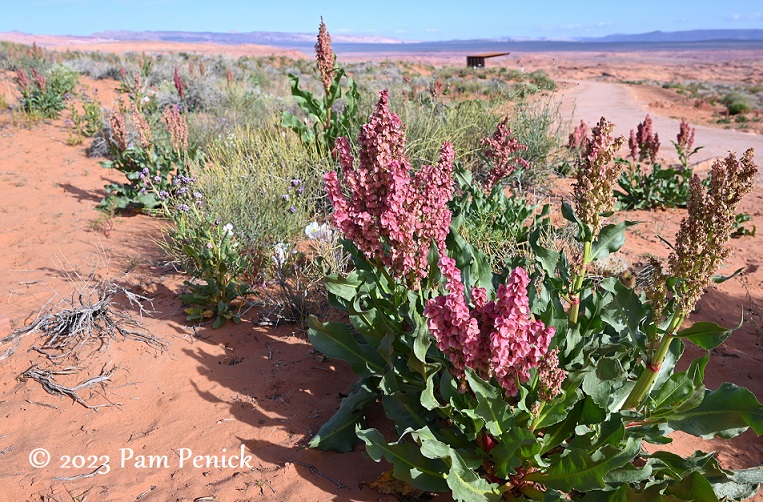
Hatted and sunscreened against the intense desert sun, we took a morning walk out to see Horseshoe Bend in Page, Arizona, before our tour of Antelope Canyon. This was back in late April, during our 5-week RV trip to see western National Parks. Wild rhubarb (I think?) was flowering in the sandy red soil alongside the trail.
Horseshoe Bend trail
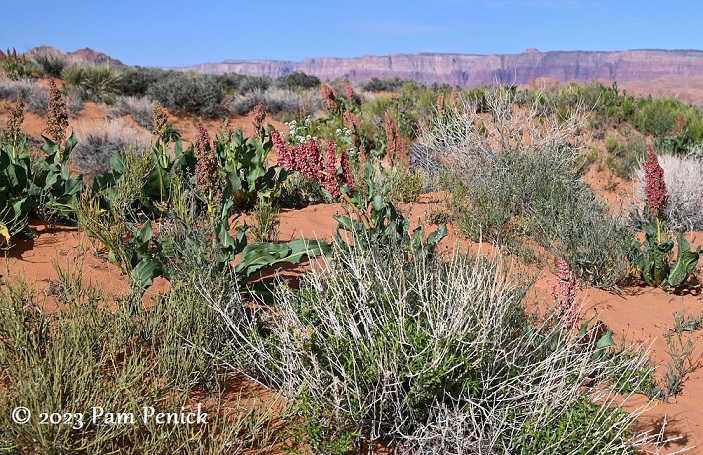
The trail to the overlook runs .75 miles (1.5 miles roundtrip) through a rich desert landscape with lavender cliffs in the distance. I was glad we got to the trailhead early in the morning because the place is popular with tourists, and the sun is intense here.
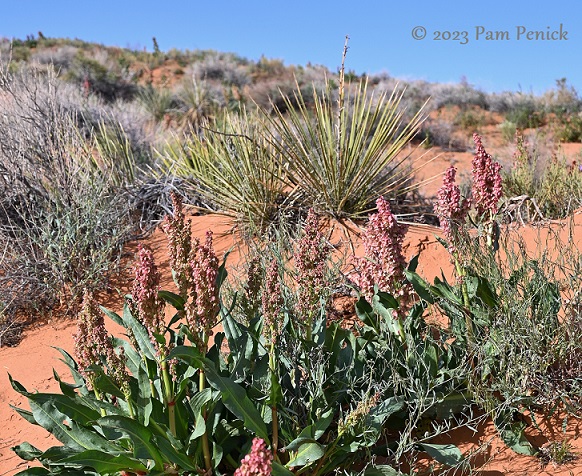
Most visitors were making a beeline straight to the overlook, but I kept stopping to take plant pics. Of course.
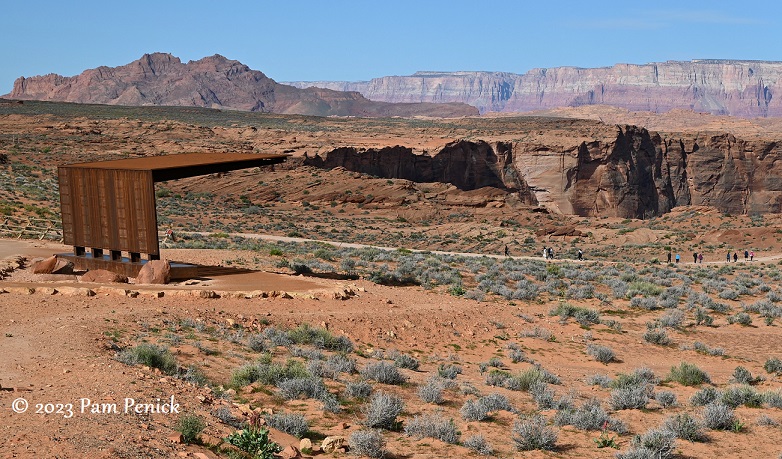
What a dramatic landscape! Two modern steel shade structures offer relief from the sun along the trail, but they weren’t needed on this cool morning.
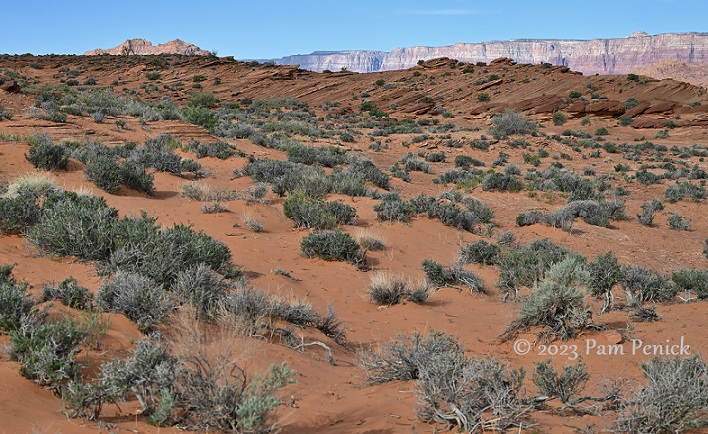
It’s red out here.
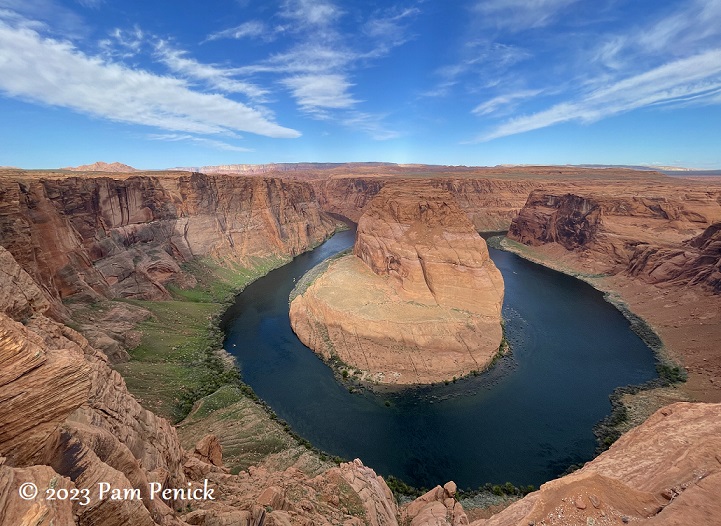
And then…the view of the Colorado River at Horseshoe Bend. As described on the park’s website:
Below the rim, the Colorado River makes a wide sweep around a sandstone escarpment. On its long downward journey to the sea, the river meandered, sometimes making wide bends, but always seeking the path of least resistance. Around 5 million years ago, the Colorado Plateau uplifted and the meandering rivers that crossed the ancient landscape were trapped in their beds. Over time, the rivers cut through the uplifted layers of sandstone. Here at Horseshoe Bend, the Colorado River created a roughly 1,000 ft (305 m) deep, 270º horseshoe-shaped bend in Glen Canyon.
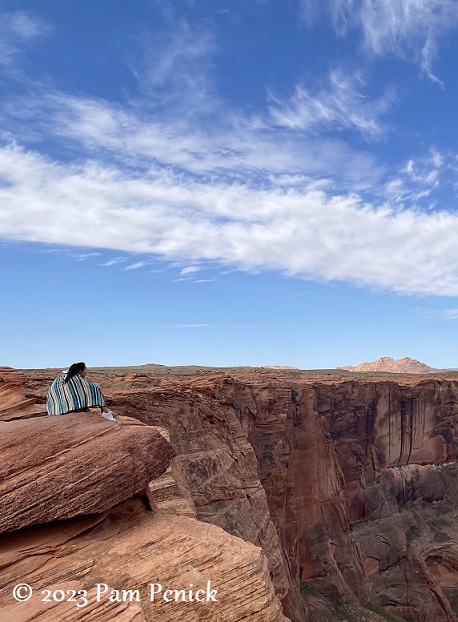
The scenery is magnificent, and this couple wrapped in a serape found a picturesque spot to enjoy it.
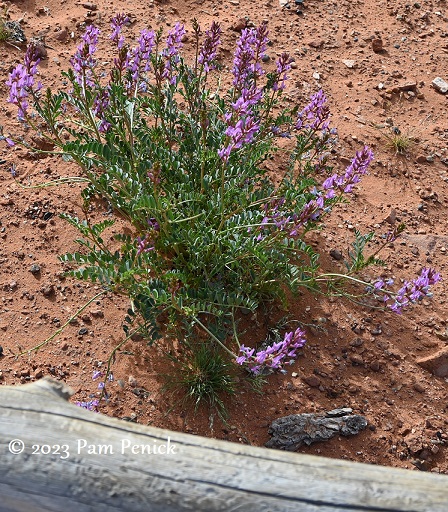
On the walk back, this little purple wildflower caught my eye. I think it’s vetch.
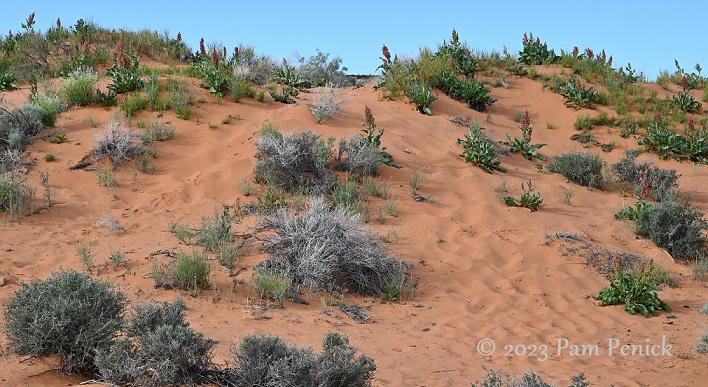
More wild rhubarb and other plants colonizing a sandy red dune
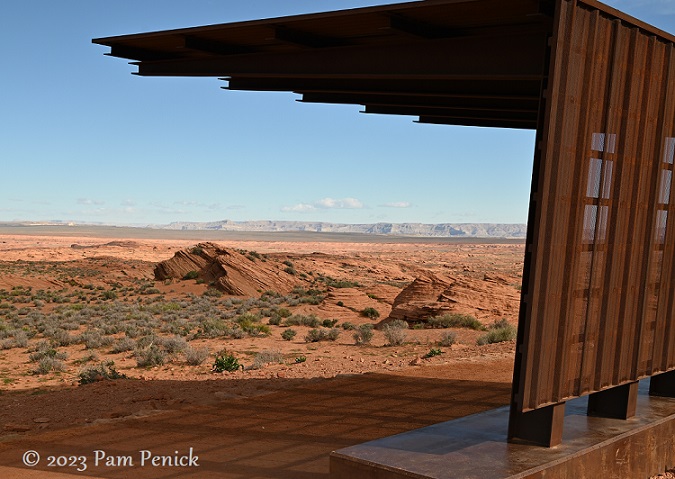
Stunning views all around
Carl Hayden Visitor Center at Glen Canyon Dam
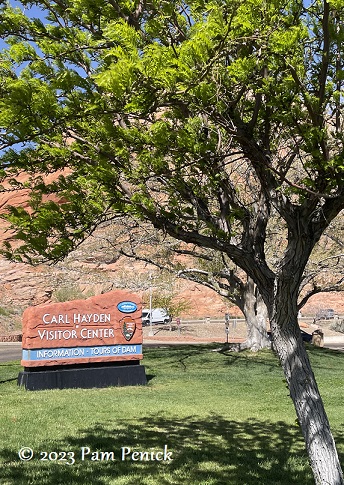
Five miles away, the Carl Hayden Visitor Center offers a different view of the Colorado…
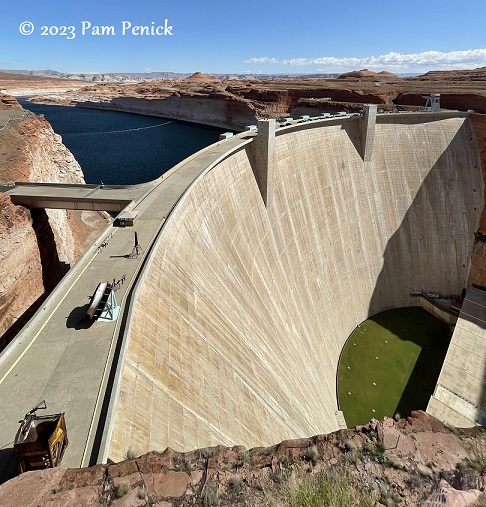
…where man’s efforts to harness the river’s power can be seen in the towering, curved Glen Canyon Dam. At 710 feet tall, it’s the second highest concrete-arch dam in the U.S., second only to Hoover Dam.
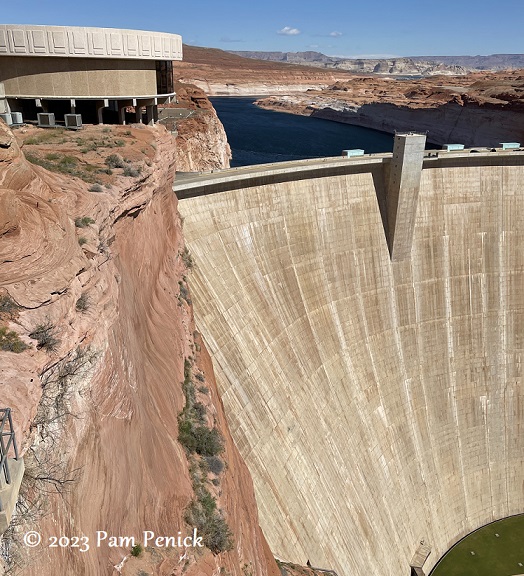
The dam created Lake Powell, which supplies millions of Americans with water. The ongoing megadrought in the West has severely depleted the river and reservoir, although heavy snow last winter is providing a year’s brief reprieve.
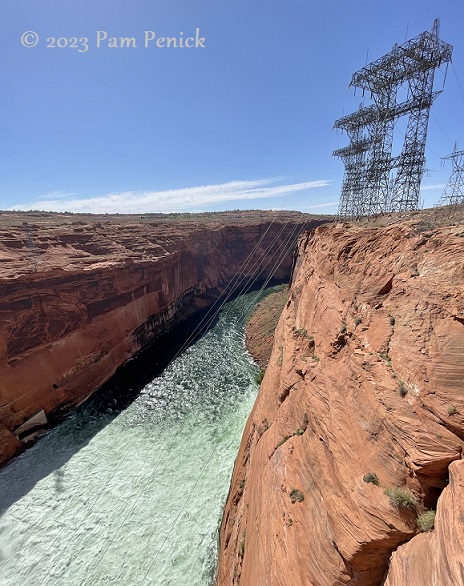
It’s amazing to see how we’ve managed to corral a mighty river like the Colorado. But Mother Nature is still in charge, as the drought illustrates so painfully.
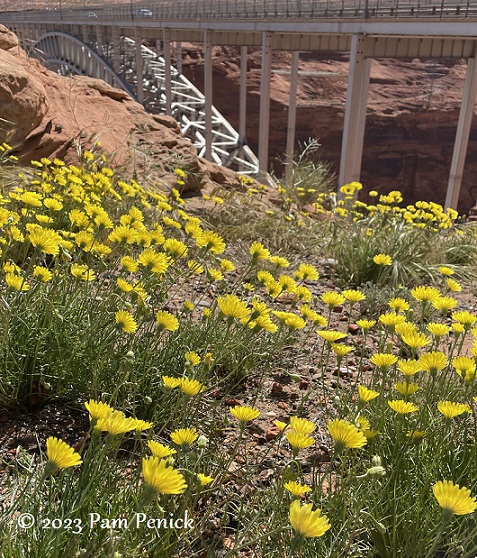
Native wildflowers, meanwhile, keep offering moments of beauty in a harsh landscape.
Up next: The majesty of Zion National Park. For a look back at our exploration of luminous Antelope Canyon, click here.
__________________________
Digging Deeper
Come learn about gardening and design at Garden Spark! I organize in-person talks by inspiring designers, landscape architects, authors, and gardeners a few times a year in Austin. These are limited-attendance events that sell out quickly, so join the Garden Spark email list to be notified in advance; simply click this link and ask to be added. Season 8 kicks off in fall 2024. Stay tuned for more info!
All material © 2025 by Pam Penick for Digging. Unauthorized reproduction prohibited.


Those colors!! What an exceptional experience y’all enjoyed! And now we get to enjoy it too
Thanks, Cat! Canyon country has epic vistas and far more color than I expected.
Great photos of a stunning landscape. The colors are just beautiful.
Thanks, Ellie. It’s a beautiful place.